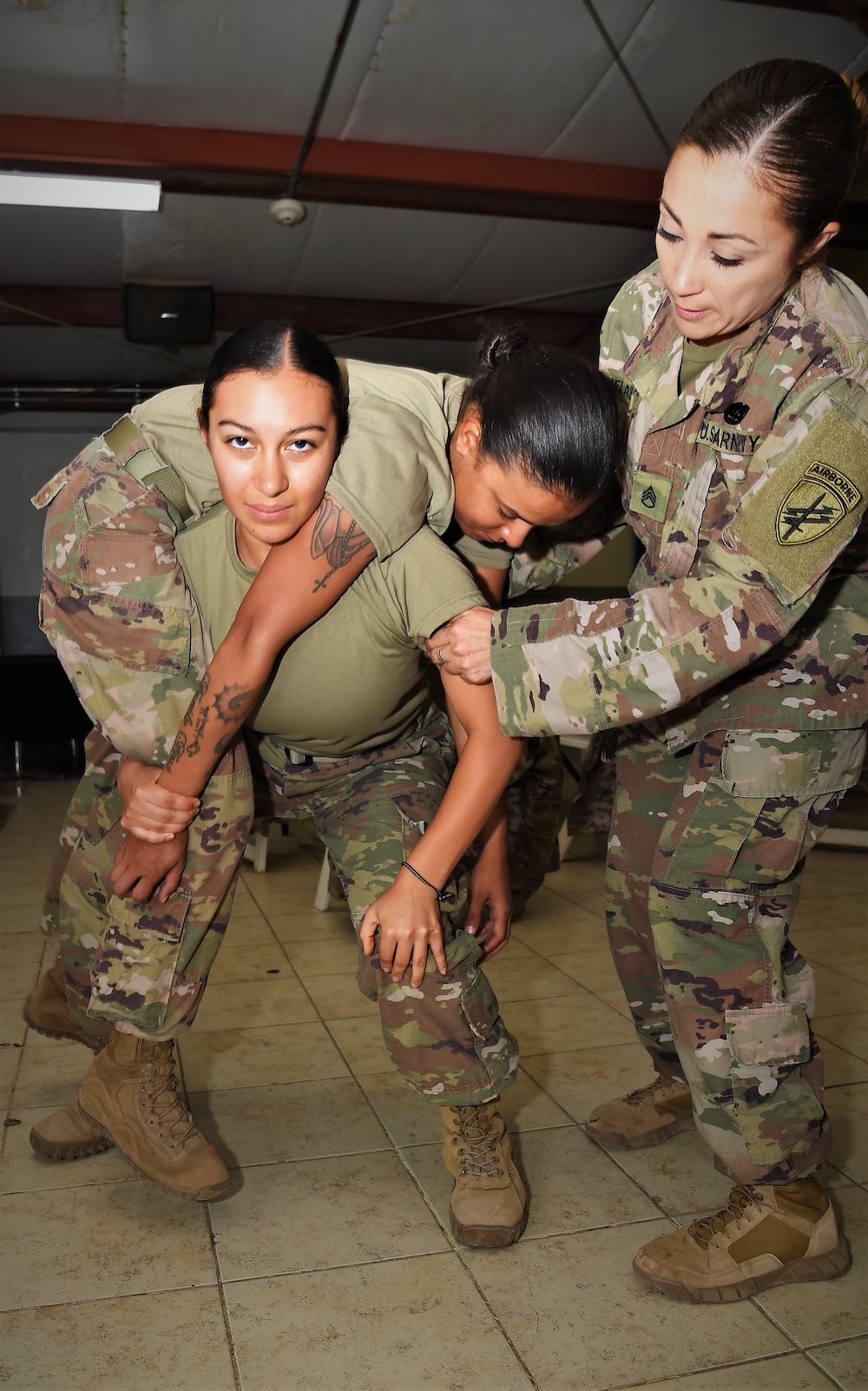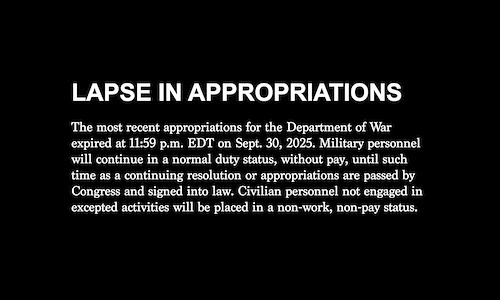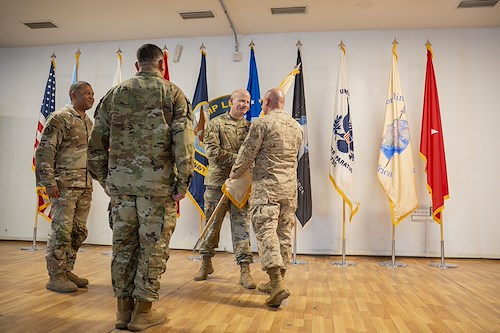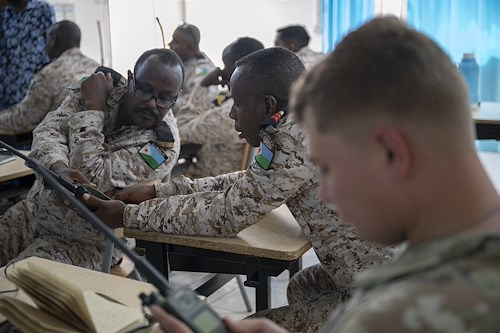Gallery contains 6 images
×
Photo 1 of 6
CJTF-HOA expands combat lifesaving skills training to joint service members
U.S. Army Staff Sgt, Crystal Velasquez, Combined Joint Task Force-Horn of Africa senior enlisted medical advisor and course instructor, watches as U.S. Army Spc. Edlyn Maldonado, CJTF-HOA, carries U.S. Army Sgt. Marina Ovalles, CJTF-HOA supply sergeant, during combat evacuation care training as part of the combat lifesaver course held on Camp Lemonnier, Djibouti, Sept. 14, 2017. The five-day course consists of 40 hours of blended classroom and hands-on training given by certified combat medics. The Army medics open the course to all military branches here. (U.S. Air National Guard photo by Tech. Sgt. Andria Allmond)
Photo by: TSgt. Sgt. Andria Allmond
Photo 2 of 6
CJTF-HOA expands combat lifesaving skills training to joint service members
U.S. Army Staff Sgt, Crystal Velasquez, Combined Joint Task Force-Horn of Africa senior enlisted medical advisor and course instructor, watches as U.S. Army Spc. Josue Mendez inserts a needle catheter to relieve tension pneumothorax on a practice model during a combat lifesaver course held on Camp Lemonnier, Djibouti, Sept. 11, 2017. The procedure is used by medical professionals and combat lifesavers to mitigate the positive pressure in the thoracic cavity that can cause a lung to collapse. (U.S. Air National Guard photo by Tech. Sgt. Andria Allmond)
Photo by: TSgt. Sgt. Andria Allmond
Photo 3 of 6
CJTF-HOA expands combat lifesaving skills training to joint service members
U.S. Army Staff Sgt, Crystal Velasquez, Combined Joint Task Force-Horn of Africa senior enlisted medical advisor and course instructor, instructs U.S. Navy Master of Arms 3rd Class Clemont Brown on maintaining a casualty’s airway open during combat lifesaver course held on Camp Lemonnier, Djibouti, Sept. 11, 2017. The U.S. Army Combat Lifesaver Course is intended to bridge first aid training – self and buddy care — and the medical training given to combat medics. The Army medics open the course to all military branches here. (U.S. Air National Guard photo by Tech. Sgt. Andria Allmond)
Photo by: TSgt. Sgt. Andria Allmond
Photo 4 of 6
CJTF-HOA expands combat lifesaving skills training to joint service members
U.S. Army medics with Combined Joint Task Force-Horn of Africa conducted training on care under fire and tactical combat care on Camp Lemonnier, Djibouti, Sept. 11, 2017. The five-day course consists of 40 hours of blended classroom and hands-on training given by certified combat medics, and is open to all military branches here. (U.S. Air National Guard photo by Tech. Sgt. Andria Allmond)
Photo by: TSgt. Sgt. Andria Allmond
Photo 5 of 6
CJTF-HOA expands combat lifesaving skills training to joint service members
U.S. Army Staff Sgt, Crystal Velasquez, Combined Joint Task Force-Horn of Africa senior enlisted medical advisor and course instructor, instructs U.S. Army Sgt. Marina Ovalles, CJTF-HOA supply sergeant, and U.S. Air Force Staff Sgt. Christopher Faucette, Combined Joint Task Force-Horn of Africa transportation motor pool, on applying a combat application tourniquet during combat lifesaver course held on Camp Lemonnier, Djibouti, Sept. 11, 2017. The U.S. Army Combat Lifesaver Course is intended to bridge first aid training – self and buddy care — and the medical training given to combat medics. (U.S. Air National Guard photo by Tech. Sgt. Andria Allmond)
Photo by: TSgt. Sgt. Andria Allmond
Photo 6 of 6
CJTF-HOA expands combat lifesaving skills training to joint service members
U.S. Army Spc. Edlyn Maldonado, Combined Joint Task Force-Horn of Africa, trains on applying a combat application tourniquet during combat lifesaver course held on Camp Lemonnier, Djibouti, Sept. 11, 2017. The weeklong course instructed and certified nearly 15 joint-service members on how to provide care and prepare casualties for evacuation. (U.S. Air National Guard photo by Tech. Sgt. Andria Allmond)
Photo by: TSgt. Sgt. Andria Allmond
The Combined Joint Task Force – Horn of Africa 443rd Civil Affairs Battalion Functional Specialty Group medics here instructed Soldiers, Sailors and Airmen during a weeklong causality-care course, Sept. 11-15.
The U.S. Army Combat Lifesaver Course (CLC) is intended to bridge first aid training – self aid and buddy care — and the medical training of combat medics.
“I think that this course is important for anyone to have, since you never know what’s going to happen and this course could actually save someone’s life,” said U.S. Air Force Staff Sgt. Christopher Faucette, CJTF-HOA Logistics transportation motor pool. “There’s a certain understanding in the joint environment that everybody knows what they’re doing as it pertains to their field. The hardest part is learning from each other, so that we are all working together – this course helps with that.”
While not a prerequisite, the Army medics open the course to all military branches here. This falls in line with the current practice of Army medics, Air Force medics and Navy corpsmen all attending their technical training at Fort Sam Houston, San Antonio, Texas. So, while operating in East Africa, the joint-force approach taken by the combat lifesavers here could be seen as a force multiplier.
“Every branch has something a little bit different to offer because they function in different environments; but combining them here leads to a shared experience,” said U.S. Army Staff Sgt. Philip Canafax CJTF-HOA medic and course instructor. “Merging the diverse backgrounds while operating with similar training and guidance, is what can strengthen movements in a joint environment like this one.”
The U.S. Army medics deployed here schedule the training quarterly or more in order to ensure that members gain or remain fully-qualified combat lifesavers.
“The advantage here is ensuring that everyone here is trained to the same level because you don’t always have just Soldiers that go out on patrol; you have Marines, you have Airmen, and Navy personnel, “ said U.S. Army Staff Sgt. Crystal Velasquez, CJTF-HOA medic and lead CLC instructor.
The five-day course consists of 40 hours of blended classroom and hands-on training given by certified combat medics. On the final day, students take a written exam. After the exam, they are taken outside to perform mock scenarios as a culminating experience. Upon successful completion of the course, the member is certified for one year and an annual recertification is required.
“In the environment we’re in today, you never know when you’re going to get hit, who’s going to get hit or how they’re going to get hit,” said Velasquez. “If we work off of statistics, proven medical practices and train everyone across the board the same way, then regardless of the branch, a life can be saved.”
A part of CJTF-HOA’s mission is to be prepared to execute or provide support to crises in order to protect U.S. military, diplomatic and civilian facilities and interest. The course taught by the U.S. Army medics here helps promote accomplishing that mission.
Velasquez’s clearly stated on how the course and mission are connected.
“The goal is simple: save lives.”























